2021 Hyundai Sonata N Line Review: Genuinely Unexpected
- Potent engine and nicely dialed-in chassis are well matched
- Plenty of standard tech and safety equipment
- Genuinely (and surprisingly) fun to drive
- Power can be too much for FWD platform
- No adaptive suspension means Normal mode is very firm
- Some equipment is absent and can't be added
The Hyundai Sonata does not seem like the ideal starting point from which to build a sports sedan, but clearly nobody bothered informing the automaker's N tuning division of that. Little else explains the 2021 Sonata N Line's legitimately surprising and genuinely impressive showing, taking a car we already know to be affordable, well-equipped, and potential of great green credentials, and adding a performance string to its bow.
Then again, underestimating Hyundai seems like a bad idea right now. The automaker's SUVs and crossovers are proving to be fiercely competitive, its sedans are reminding us of why passenger cars are still worthy of consideration, and its upscale Genesis brand is producing designs and cabins that leave luxury mainstays looking staid and formulaic.
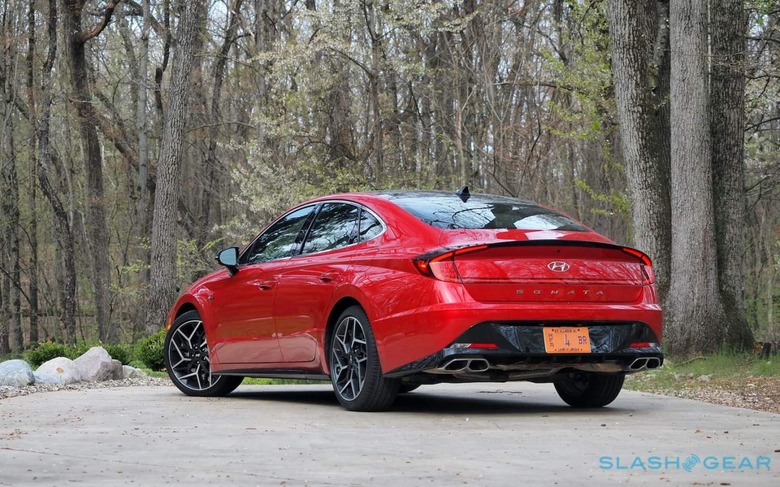
Even with all that, though, there's a cloud of skepticism about just how easy it is to make a truly compelling performance car. Not just a powerful one, or one which looks the part: something that actually rewards eager drivers and flatters novices. A sport mode that's more than just red ambient lighting and a louder exhaust.
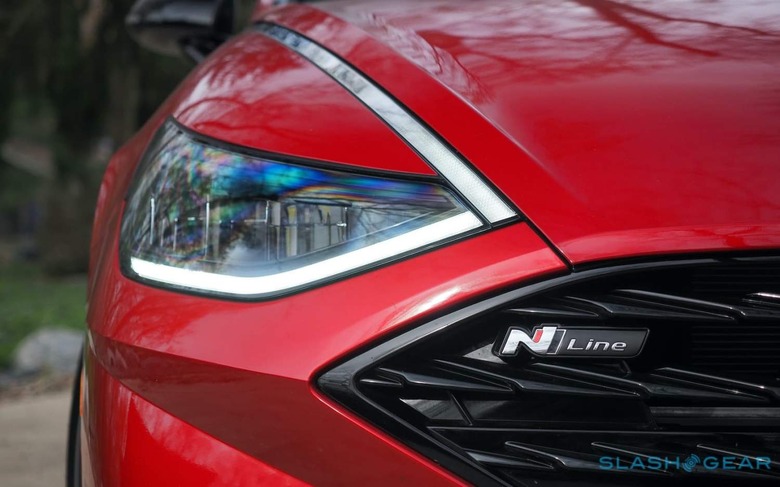
I'm not saying I was pessimistic about the Sonata N Line, then – I'd already heard good things about the tuning team's capabilities from Vincent's report of the 2021 Elantra N – but it definitely earned a wider-than-expected smile when I first notched it into sport.
Hyundai starts with a 2.5-liter inline-4 turbocharged gas engine, familiar from Genesis' G80 and GV80. Here, it's dialed in for 290 horsepower and 311 lb-ft of torque, pushing all that power to the front wheels via an N-tuned 8-speed wet dual clutch transmission. There's MacPherson strut front suspension with coils, and independent multilink rear suspension,
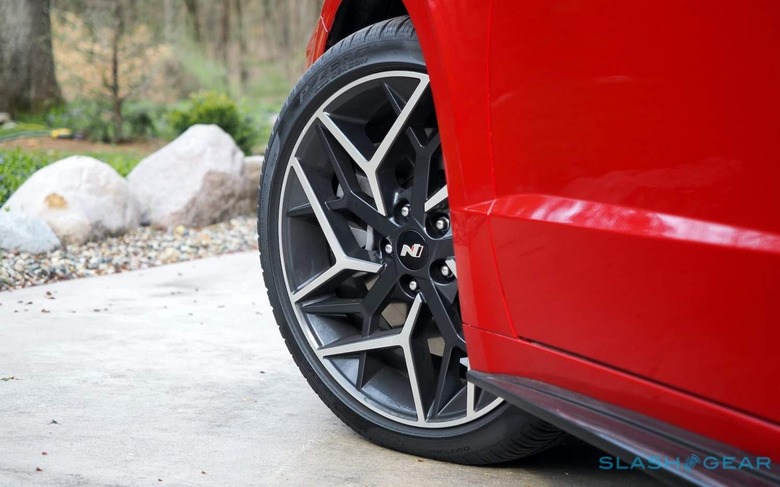
It means you get 110 hp more than the 1.6-liter turbo-4 in the regular Sonata, and 116 lb-ft more torque, and the result is genuinely entertaining.
With a $33,000 (plus destination) sticker, it comes as little shock to find that Hyundai wasn't able to go the whole hog in the mechanical department. As well as no AWD option, there's no adaptive damping, and no limited-slip differential. Instead you get a single suspension setup.
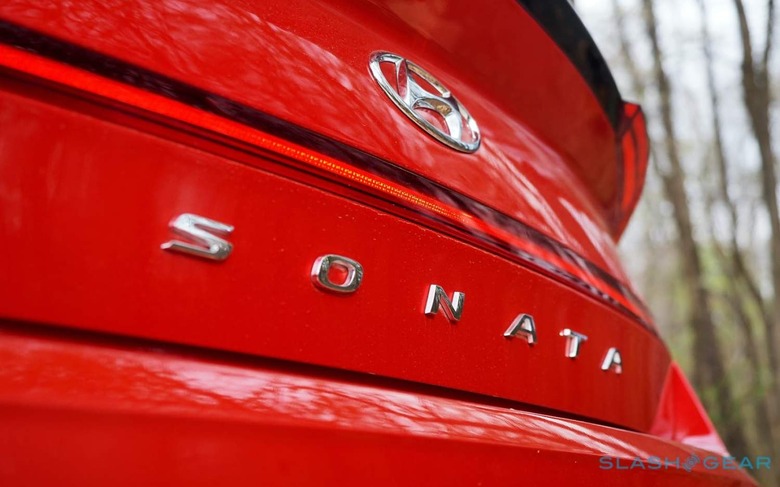
It means that, in Normal mode, things are still on the firm side. Not crashy, spine destroying, impossible-to-live-with firm, but definitely less plush than a regular Sonata. I liked that from behind the wheel, but rear seat passengers complained a little. The DCT, too, can be a little clunky when you're asking it to simmer not roar.
Both the tuning and the transmission are a better match with Sport mode, where the full urgency of the 2.5-liter engine is called upon. Sport+ mode, meanwhile, adds in some more aggressive downshifts, but also turns the traction control off by default. That, it turns out, isn't such a great idea.
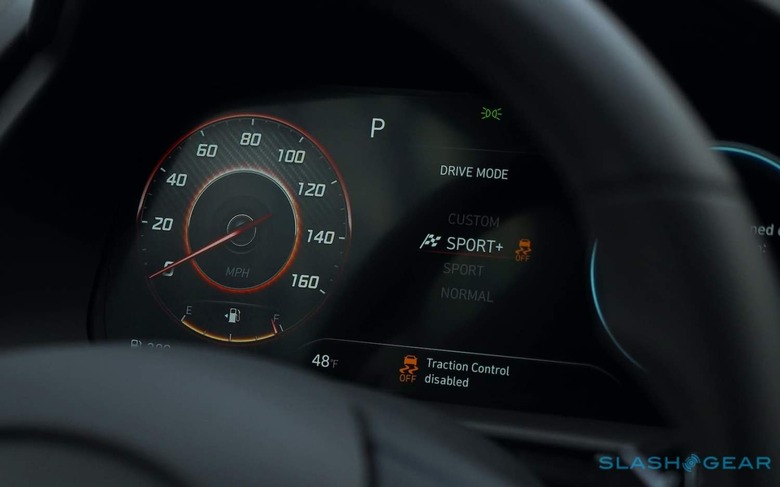
Plant your right foot on the gas, and the Sonata N Line can get squirmy as all the power tries to make it to the front wheels. It's fairly easy to get them to chirp or even spin, too. Not to the point where it feels unsafe, or impossible to handle, but it means you do need to modulate a little in order to make maximum use of the grunt on tap and not squander it on torque steer.
The 2.5-liter is eager, and it never seems to fall outside of its meaty torque band. The transmission's willingness to hold on right until you're at the redline helps there, too, and if you clack at the metal paddles yourself the Sonata N Line will stay in manual mode until you hit the "D" button again. Better still is the soundtrack as you do it, with that smile-prompting growl and gurgle decidedly not what people expect to hear from something with a Hyundai badge.
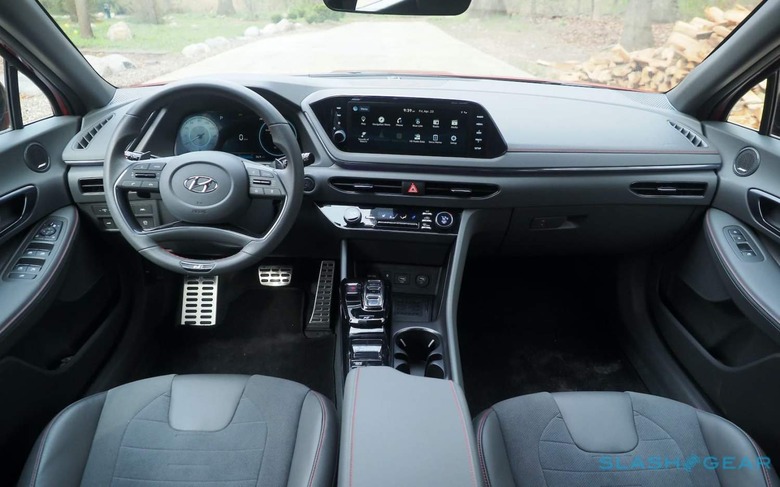
Come the corners, there's the potential for understeer but it's easy to temper before you get to that point. The suspension tuning keeps things level and flat, and while there's not quite the communication through the electric power steering that you could hope for, it's still in keeping with the Sonata N's eminent usability. It's just plain fun, in the same way that the new Acura TLX can be, only that costs a fair chunk more.
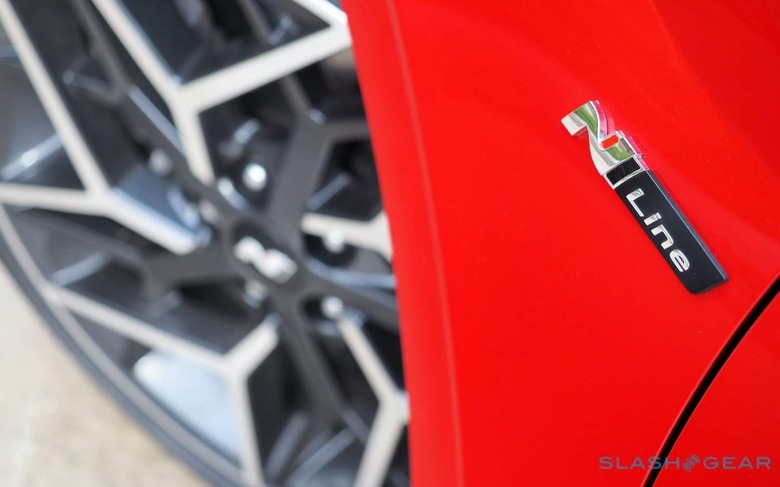
As for the styling, the regular Sonata's space-age looks are massaged rather than overhauled. The 19-inch wheels with their complex multi-spoke design are lovely – and there are bigger brakes behind them than normal, too, which hold up nicely to the uptick in power – while the front and rear fascias are a little different as well. The sharply-contoured trunk gets an integrated spoiler, and there are shiny quad exhaust tips. The N team then throws its N Line badging on the fenders and grille.
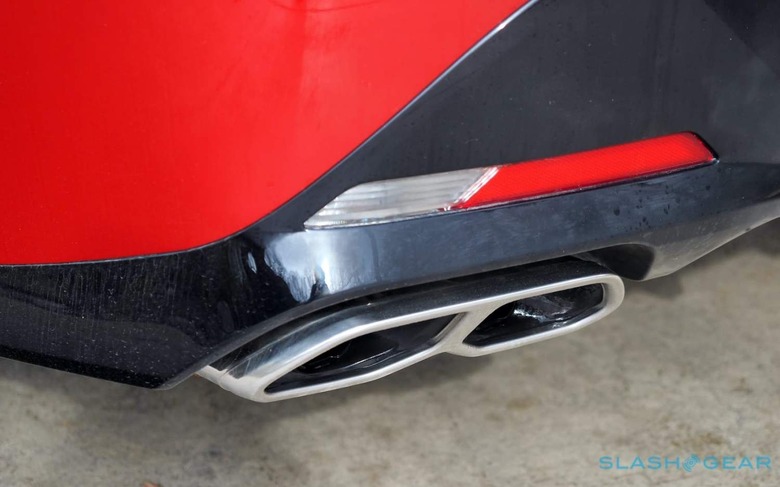
Inside, the standard seats are ditched in favor of N Sport versions, with a mix of Nappa leather and faux-suede, all picked out with red contrast stitching. They're grippy and comfortable, and they have power side bolster adjustment which is fantastic. Other than that, and a few extra N Line badges, though, things aren't particularly different.
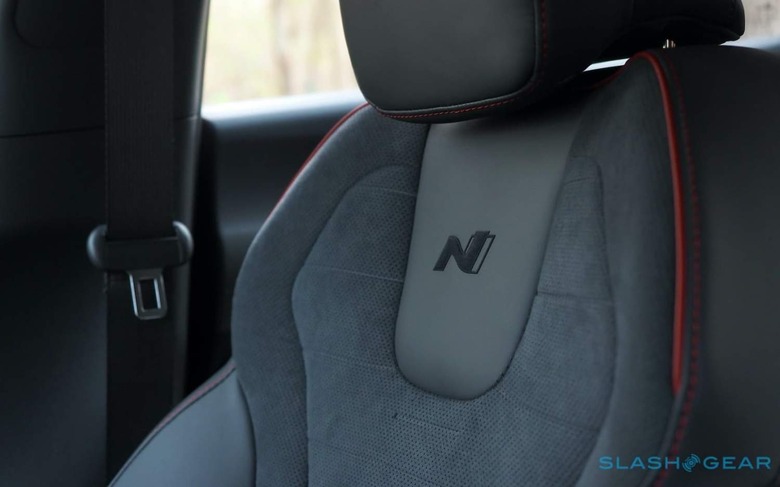
Lucky, then, that the normal Sonata's cabin is decent. The fully-digital 12.3-inch driver's instrumentation is clean and not over-designed, while the 10.25-inch center touchscreen gets navigation, Android Auto and Apple CarPlay, and a Bose 12-speaker audio system to play with. There's a wireless charging pad for your phone, dual-zone automatic climate control, and 64-color ambient lighting.
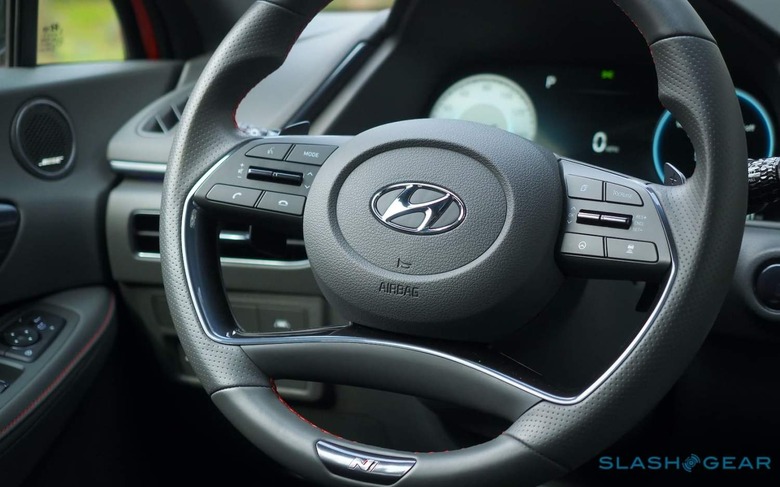
The front seats are heated, though not the steering wheel, and oddly Hyundai doesn't throw in the head-up display that it includes on the Sonata Limited. There's no option to add it, either: the only choice you really get is for summer tires instead of the standard all-seasons, and an auto-dimming rearview mirror. They're blips on an otherwise impressive score sheet, though.
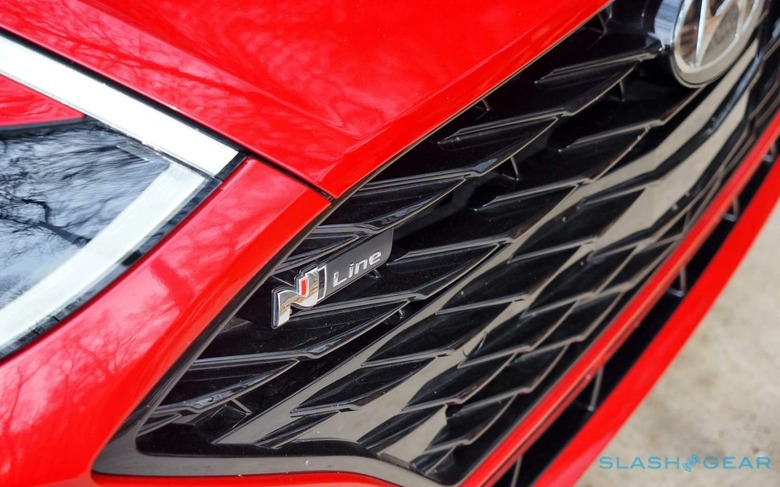
On the economy front, the EPA says you could see 23 mpg in the city, 33 mpg on the highway, and 27 mpg combined. You'll be unsurprised to hear that, driven with gusto, that combined number is tricky to hit. With more average driving, though, I could make it, but this is no solar-roof toting Sonata Hybrid when it comes to gas-sipping.
2021 Hyundai Sonata N Line Verdict
The "attainable sports sedan" category is a small one, though the Sonata N Line does have a few rivals worth considering. Toyota's Camry TRD has two extra cylinders and shoutier styling, for instance, but I don't think it drives as cohesively as the Hyundai. To find fitting competition there, you're going to have to skip up a few thousand to get yourself to TLX territory.
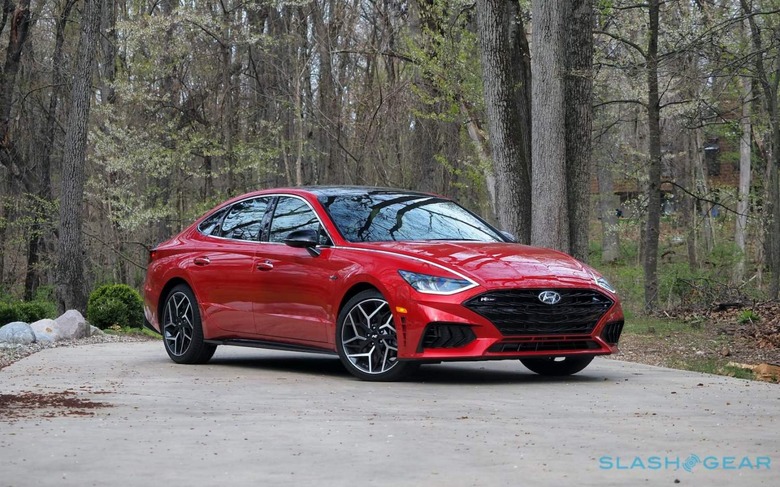
If you're surprised the Sonata N Line can be included in such esteemed company, you're not the only one. Automakers love slapping "Sport" badges onto cars, fitting them with bigger wheels and chunkier sports seats, and then whistle and avoid eye-contact when you ask them why the driving experience doesn't live up to the branding (or, often, the price tag).
Hyundai, in contrast, delivers more for the driver than the comparatively subtle exterior changes would imply. While I suspect the 2021 Sonata N will remain relatively niche all the same, those who look beyond badge expectations will find themselves with a pleasing conundrum on their hands.
